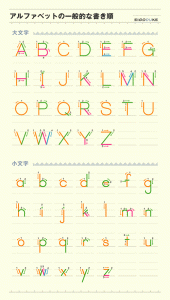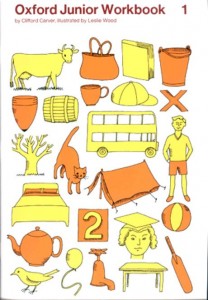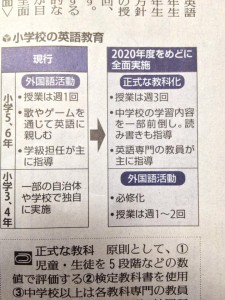Young Children and STEP Eiken
Unprofessional and Irresponsible
I’m going to be blunt here. I believe forcing young children to take the STEP Eiken test has a high chance of being pointless, counter-productive, and even irresponsible.
Yesterday I got involved in a debate on Facebook after someone reposted an update from the owner of an English immersion kindergarten announcing one of their six-year-olds had passed the pre-2 Grade of the STEP Eiken test. They also mentioned this same kindergarten had been in the news a while back for having a six year old pass the pre-1 Grade test.
Now, I don’t have a problem with the STEP Eiken test. My wife’s school is an Eiken test centre and I have been involved with various aspects of the test for the last decade. I think it does a perfectly good job of what it was designed to do: certify that (mainly) junior and senior high school students have acquired the grammar and vocabulary they are taught in school. The tests are designed to match up to school years as follows:
Grade 5 Eiken -> finished JHS 1st grade English
Grade 4 Eiken -> finished JHS 2nd grade English
Grade 3 Eiken -> finished JHS 3rd grade English
Grade pre-2 -> mid-SHS English
Grade 2 -> finished SHS English
Grade pre-1 -> university equivalent English
Grade 1 -> high proficiency in English for professional use
The tests seem to be most useful when applying to high school or university, or when working as an English teacher or public servant. It’s been around for a long time, and is probably the best-known English qualification in Japan.
Which brings us to young children.
Many parents, not knowing better, have an impression of Eiken as a general English test. In their eyes, passing Eiken means that someone has a certain English ability. They then decide that it would be good for their children to pass Eiken earlier than usual.
Now, for some students, taking the STEP Eiken test slightly early is not a bad thing. For the right student who is ready, it can be a confidence boost, a way to get used to taking tests, and a way to show parents that students have acquired some English skills.
The problem arises when parents take it too far and push their children into taking it too soon.
Pointless
There is no point in taking the Eiken test very early. It is mainly used for recommended entry into high schools (passing the Grade 3 or pre-2 test displays a mastery of junior high school English) or universities (Grade 2 shows a mastery of high school English, while pre-1 or 1 show advanced English proficiency).
Passing the test at a very early age confers no advantage, and now that the tests have an expiry date on them just means that students will have to take them again nearer the time they will need to use them.
The only reason I can think of to take tests early is so that parents or schools can brag about it.
Counter-productive
It can be stressful and uncomfortable for children to prepare for tests they are not ready for developmentally. Pencil use, writing their name and address, and filling in mark sheets correctly are all difficult for younger children. Beyond Eiken pre-2, the content of the tests takes an academic turn. Questions refer to social and environmental issues. Written and spoken tests expect a certain format for answers. Forcing children to conform to this is wasting time that could be used to learn English more appropriately, through stories, play, and interaction with teachers and peers.
I had a young boy come to an Eiken speaking test once and ask me in beautifully accented English to fill in his test card for him, because he couldn’t write his name and didn’t know his phone number. He failed the test as he didn’t seem to understand that it was a test and couldn’t stay on point. His English was beautiful but he wasn’t ready to take a highly structured test.
Another time I was ‘helping’ a ten-year old boy who had spent a long time in the US with the Eiken 2. As we worked through past papers, it became clear that he didn’t know the concepts, let alone the vocabulary, for a lot of the questions. It was heartbreaking, but at that time I didn’t have the experience or the confidence to stand up to his parents.
Irresponsible
I believe schools and teachers have a duty to educate parents about the nature and purpose of tests so that they can make appropriate decisions regarding their children. Failing to do so, in my eyes, makes a teacher or school unprofessional, irresponsible, and even negligent.
There are a number of English tests developed specifically for young children, such as the Cambridge YLE, junior UN Eiken, or junior STEP Eiken tests. Students can also show their skills through performance, in-class assessment, or creating portfolios of their work. With so many appropriate alternatives, please think carefully before putting the wishes of parents or your own commercial interests ahead of what is best for each child.
What do you think? Am I being too harsh? Are there any good reasons for having very young children take the STEP Eiken?
Teaching alphabet stroke order and stroke count to Japanese children
Not as clear as it first seemed
I’ve also been meaning to write this post for a while 🙂
A couple of years ago it came to my attention that some of our students were being told by their elementary school teachers and junior high school teachers that they were writing English letters wrong.
After an initial reaction of annoyance (this seems to be a perennial problem with some teachers who don’t have the confidence to deviate from the one correct answer given by the textbook), I decided that it might be better to find out what the official ‘stroke order’ for the alphabet in Japan is and make sure our students know it.
I have done some quick research and there doesn’t seem to be any official stroke order. I found the following two online:
This is from Nintendo
And this is from GakuryokuUp.
As you can see, they are slightly different (lower-case w, for example). Presumably the teachers are going off whatever textbook they are using in class, and are so insecure that they won’t accept alternatives.
Which kind of takes us back to the beginning. I guess we just need to teach our students that there are different ways of writing letters, and some of their teachers in the future are going to be particular about how they are written in their class. Always do things the way your current teacher wants you to, even if they are wrong (like the ALT who told one of our students that the only correct response to ‘how are you?’ is ‘I’m fine, thank you’).
Any experiences with teaching letter-writing?
Review: Oxford Junior Workbooks
An oldie but goodie
The Oxford Junior Workbook series is a great homework resource for elementary school age children. There are ten workbooks in the series, from the introductory A and B, to the 1-8 of the main series. We have been using these for many years now, and find them extremely useful as supplementary homework for children (post-phonics, pre-intermediate).
The Good
- Price. The books are 735 yen before discounts, so one of the most economical workbooks around.
- Intuitive. Most of the exercises are fairly intuitive and require little explanation. Perfect for homework.
- Well designed. The books build up language and concepts slowly in a very learner-friendly way.
- Range of activities. There are a range of activities, from colouring to matching, writing, and drawing.
The Bad
- Dated. The books are showing their age in terms of design.
- Dated. Some of the language and content is archaic (ink blot?).
- Dated. Slightly sexist and non-PC at times.
Overall
Overall the Oxford Junior Workbook series is a great way to provide extra work outside of class that student enjoy and find useful. They can be used in lockstep by assigning specific pages as homework, or individually by allowing students to work at their own pace. The books are cheap enough that buying one or two each year shouldn’t break the bank.
Very much recommended.
Elementary School English (MEXT announcement)
Some big news from MEXT this week (courtesy of Kensaku Yoshida on Facebook)
Basically, from 2020 (estimated), 5-6 grade students will have English as a subject three times a week with specialist teachers. 3-4 grade students will have English activities once or twice a week.
The devil is in the details (see my recommendations here) but this looks like a step in the right direction!
business eikaiwa kids school management study trips summer camp young learners
by sendaiben
leave a comment
Eikaiwa School Field Trips: Summer at the Zoo
Every year we organize some kind of optional summer event for our students. Past events have included ice skating (feels weird to put on sweaters and gloves in August!), outdoor games, playing in a river, and trips to the seaside. This year we decided to go to Yagiyama Zoo in Sendai with our preschool- and elementary school-aged students.
Before the trip we visited the zoo to plan out routes and activities, bought small sketchbooks for all the students, divided them into groups and assigned teachers to lead each group.
There was a slight problem with the timing of the announcement coinciding with the school being closed for some classes, so that some parents only got the announcement letter after the trip was full! We did our best to accommodate them which led to us needing a larger bus and the groups getting a bit too big for the number of teachers we had (several were away due to the summer holidays).
Then the day before the excursion the weather reports changed from sunny with cloudy spells to rain (60%). Then that evening rain (70%). The next morning the ground was wet when we woke up at six am, but by seven it was raining. By eight thirty (the deadline for making a decision) it was raining heavily.
Fortunately we had a plan B. We had made arrangements to go to the aquarium at Matsushima in the event of rain. This was not ideal, but preferable to cancelling and being out of pocket for the bus hire and other expenses.
The problem with the aquarium is that we hadn’t had time to visit and make plans. It was also much more expensive than the zoo, and smaller. We weren’t sure if there was enough to do there for the four hours we had planned.
Lessons Learned
We learned a lot from this year’s trip. Here are some of the most important things:
1. Having a plan B is essential if weather could impact on your trip. What were the chances of the only rainy day for weeks and weeks being the day we were going to the zoo? Because we had a plan B and had told the students and parents about it our trip wasn’t ruined. However, we should have put more time into getting ready for plan B.
2. Accurately estimating demand, making sure the sign-up process is fair to everyone, and sticking to deadlines and limits on numbers of students is important. We didn’t have any major problems this time, but the large numbers of students made things more difficult for our teachers (I found myself supervising sixteen young children for much of the day, and it was too many for comfort).
3. The number of seats quoted by bus companies include those fold-down seats in the middle. I don’t like them because they are uncomfortable, seem less safe, and mean that it is not possible for teachers to move around the bus when they are in use. In the future, I would like to make sure all the students have a proper seat, with only teachers in the middle seats if necessary.
Conclusion
In the end the trip turned out well. The aquarium had just enough to keep us busy (looking at the fish, drawing pictures, watching the sealion show, shaking hands with a sealion, meeting baby turtles, wading in a big pool, etc.). It was also great that they had a large seating area that wasn’t at all busy, so we could sit the students down in groups and talk to them, have them draw pictures, and eat lunch in an orderly fashion.
I think we were both unlucky (the weather) and lucky (everything turned out fine and the students enjoyed themselves). We also got a few insights for next year.
Does anyone else do field trips?






